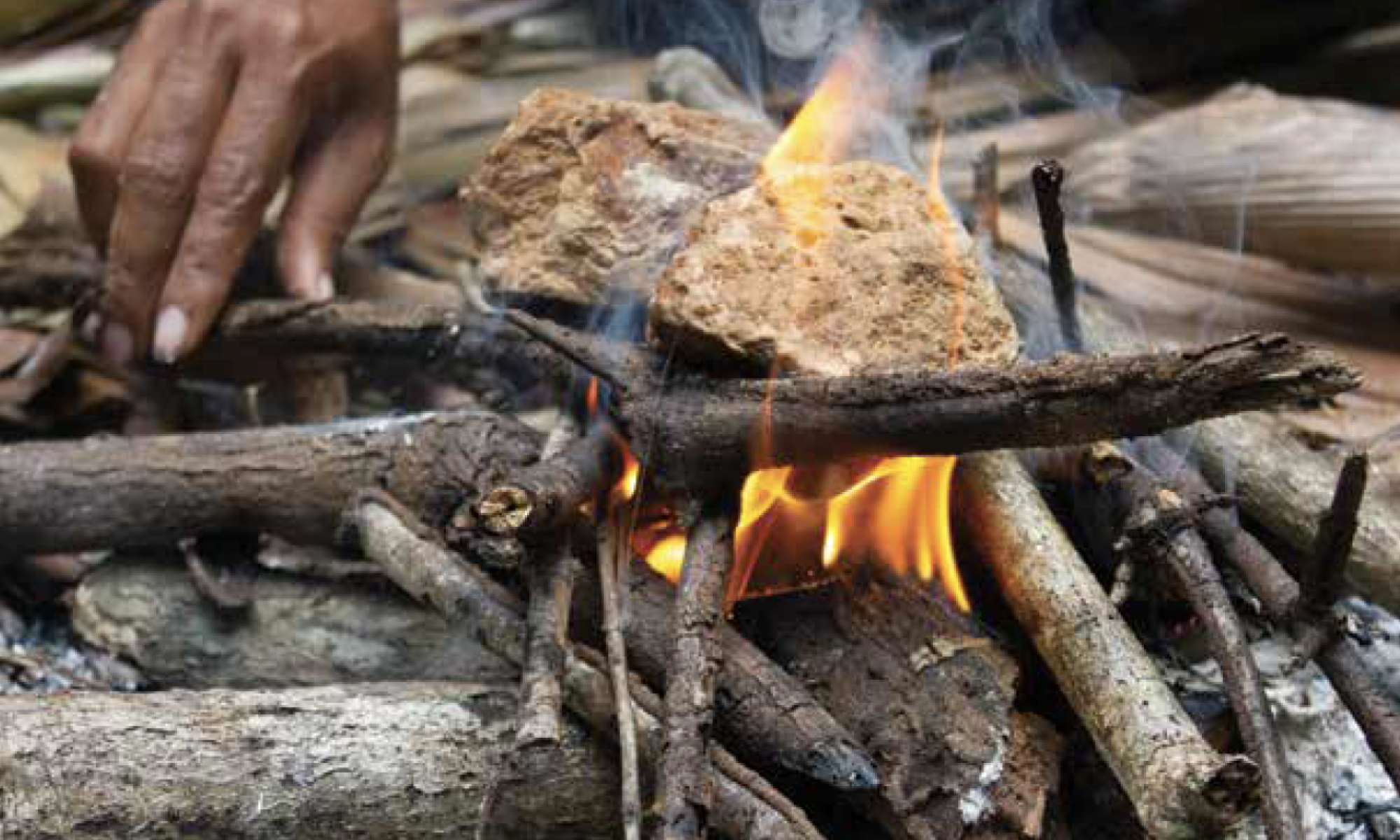Wetness
Standing knee-deep in the mud, Evelina, a young Marind woman from the West Papuan district of Merauke, holds her young infant up to the trunk of a sago palm. Slowly, she guides the child’s hand down the tree’s leathery bark, across sap-filled cracks, deep fissures, mossy ridges, crumbling lichen patches and rugged internodes. Walking around the tree, Evelina directs her infant’s eyes to the canopy and points out the leafy fronds bursting from the apex of the palm. She gently presses her swollen stomach against a sago trunk so that her yet-to-be-born child can ‘know the wetness of sago’. In a half-whisper, Evelina describes to the unborn baby the appearance of the palm, the orchids flourishing along its bole and the suckers emerging from its base. She speaks of the starch that will be obtained from the tree, whose wetness will be absorbed by those who consume it, making them strong and healthy. The sweat of the people who fell the tree and rasp the starch, too, will mingle with the food and fortify those who eat it. ‘Being in the forest makes our skin glossy’, Evelina tells me. ‘It makes our bodies wet, strong, and beautiful. It allows us to share wetness (dubadub) with our plant and animal kin.
Thus it is to become anim (human).’
Title image:
Sophie Chao
Eating sago transmits to consumers
the flesh and wetness of the plant
and its multispecies environment
Digital image, 2016
Courtesy of the artist


